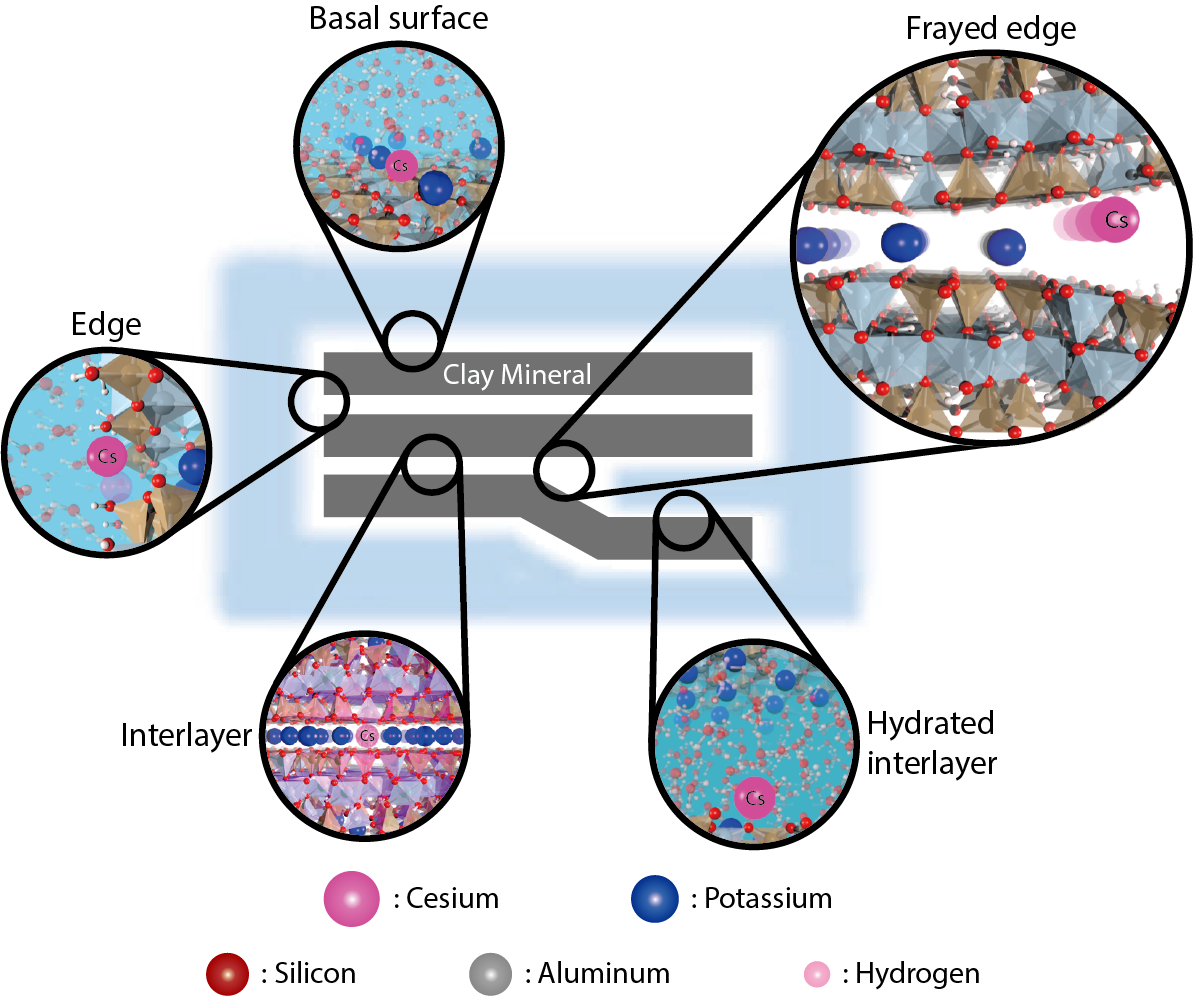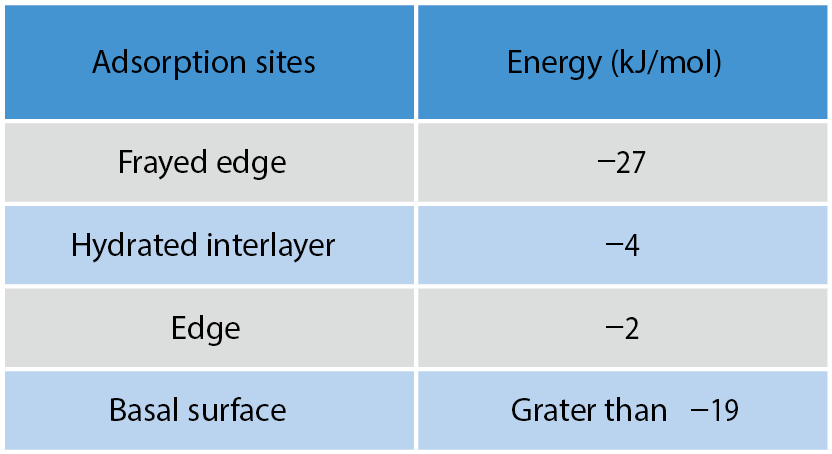
Fig.1-40 Microscopic models of surface structures on clay minerals
Table 1-2 Adsorption Energies

Radioactive cesium was released into the environment due to the accident at the TEPCO’s Fukushima Daiichi NPS in March 2011. Part of it was strongly adsorbed onto the topsoil and became the main cause of the evacuation of residents. Decontamination was carried out on a large scale, and the radioactivity and air-dose rate were successfully reduced. However, a huge amount of waste soil was produced by the decontamination due to the use of a method that removes contaminated topsoil. Therefore, processing and management of the waste soil are emerging as problems.
For the development of volume reduction technology and risk assessment for long-term management, it will be helpful to know how cesium is adsorbed onto the soil. It is known that radioactive cesium strongly adsorbs to clay minerals in soil. However, its adsorption mechanism is unknown. One reason for which it is difficult to investigate this mechanism is that adsorption occurs over a small area that cannot be observed, even with the latest experimental equipment. As shown in Fig.1-40, clay minerals have several surface structures, each of which has been thought to exhibit different adsorption strengths. However, it is very difficult to observe the details.
Computer simulation is a powerful tool for research on such a small area. We collaborated with research institutes in the United States and the National Institutes for Quantum and Radiological Science and Technology to model the atomic-scale surface structures shown in Fig.1-40. The adsorption energies of cesium on the surfaces were evaluated using the supercomputer by changing the distance between cesium and the model surfaces at the atomic scale (Table 1-2). Based on the results of this systematic numerical simulation, it was shown that a wedge-shaped structure called “frayed edge” with a size of about a nanometer gouged by weathering adsorbs cesium most strongly (Table 1-2). A hypothesis concerning the strongest adsorption by the frayed edges was proposed about 50 years ago, but experimental proof was difficult to obtain due to the difficulty of directly observing atomic-scale structures. We succeeded in validating this hypothesis by investigating the adsorption on each surface through numerical simulations.
Based on the above results and the findings obtained from previous experimental studies, we also evaluated promising volume reduction technologies and risks during long-term management. In the future, based on the adsorption mechanism revealed in this research, we will continue research and development to contribute to reducing the volume of waste soil.